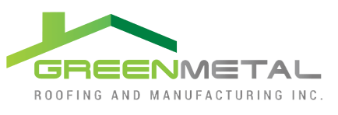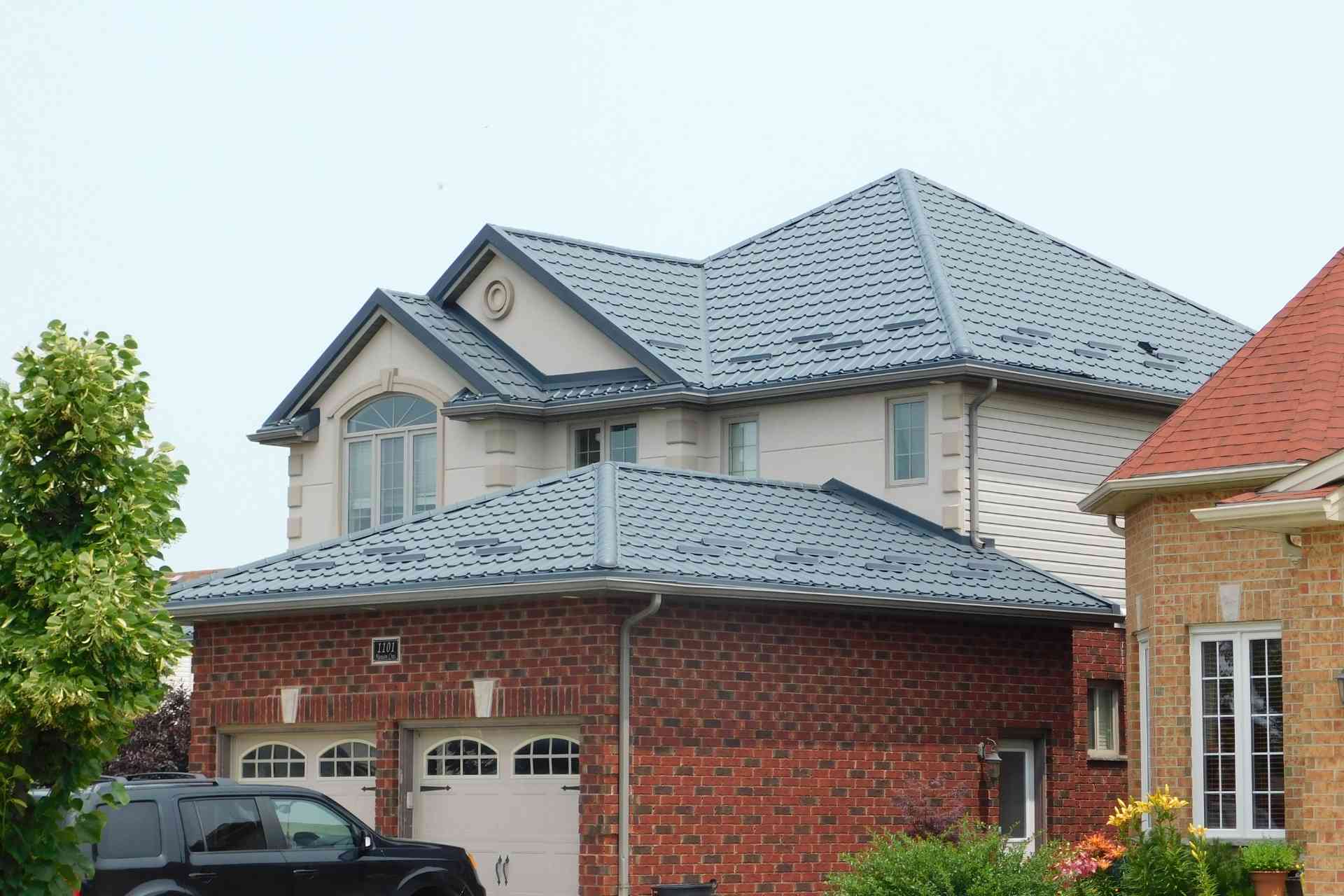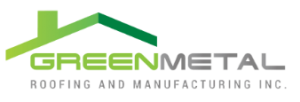The attractive appearance of a metal roof, along with the fact that it is a sturdy and long-lasting material, makes it a favorite commercial roofing choice for many businesses and households. It is critical to consider the sort of roof you will have while constructing a home or renovating a roof. If you decide to go with metal roofing, keep in mind that these roofs have their own set of issues that can be avoided with the proper care.
1. Oil canning
You may have noticed that an area of your metal roof looks wavy or wrinkled. If this is the case, you are most likely dealing with an oil canning issue. One of the most common metal roof problems is oil canning. It can happen with any metal and has nothing to do with the structural soundness of the structure. The roofer who built your roof may have allowed inadequate room for it to expand and contract naturally as materials do, or they may have applied too much pressure to the metal during the first coiling phase. In addition, oil canning is a natural feature of almost all metal roofs and walls. Consider oil canning to be an overstressed metal on a standing seam metal system that is unable to maintain a flat form, leading the metal to give way and produce visible waves. Oil canning is one of the most popular metal roofing concerns.
Solution: As previously stated, oil canning is difficult to prevent since it is difficult to identify and measure. However, there are numerous steps you may do to lessen the likelihood of this happening. One of them is breaking up the flat surface with ribs and striations which flatter the surface, the less likely oil canning can occur.Thicker panels are also preferable because thinner panels are more prone to the issue. Avoiding high gloss coatings might also help to conceal the effects of oil canning. Another option is to use matte coatings as it offers less reflecting and can hide the issue of oil canning.
2. Scratching and scuffing
Metal roofing, like anything else with a paint system, is prone to scratching and scuffing at any point in its life. Most metal coil manufacturers take considerable care to ensure that the coil is not damaged during slitting, recoiling, or delivery to your home or office. Most contractors and installers treat coils and panels with care during the roll making and installation process. However, it is always conceivable that one or more of these parties will mishandle the metal, causing surface damage. This might happen if the metal is incorrectly coiled or recoiled, it may rub together and remove some coating. Another possible issue that causes scratching and scuffing is that panels are sometimes walked over by the workers on site. It is always vital to bring a scratch or scuff to your contractor’s attention in order to get it replaced, especially if it is highly obvious and stretches from top to bottom of the metal panel. Many scrapes and scuffs are repairable and treatable using paint and touch-up pens. A serious scratch that penetrates all the way through the metal substance, on the other hand, must be replaced.
Solution: There is not much you can do to avoid scratches before and during installation. Hiring qualified installers who are trained to avoid, identify, and repair any damage to the metal’s surface is your best chance here. It is your responsibility to identify, repair, or notify your manufacturer of any scratches that appear after installation. It is also critical to keep traffic to a minimum, but if you must walk on the roof, make sure your shoes are clean because dirt and debris can create scratches. Also, avoid treading on vulnerable areas such as valleys and ribs.
3. Corrosion
Many people prefer metal roofing because it resists corrosion and degradation for decades, often up to 60 years, making it the only roof they will ever need to purchase. Manufacturers and contractors can help you choose which metal material will best survive corrosion in the climate where your home or construction is located. Although there are few exceptions, most metal roofs feature corrosion-resistant paint systems or coatings.
If the metal is not properly coated, corrosion may appear on the underside of the panel. Water molecules become trapped between the panel and the insulation, causing the metal to corrode if not adequately protected. Furthermore, if a granulated underlayment is utilized or laid directly over a shingle roof, the protective backside coating may be scraped, resulting in the metal roof system collapsing from within. Another cause of corrosion is that cut edges on a steel roof will experience edge creep, which is corrosion at the cut edge. Many standing seam metal roof features incorporate folds or hemmed edges to conceal the metal’s cut edge. Many roofing treatments, such as painting visible cut edges using a paint pen, can help to reduce edge creep.
Solution: It is critical to detect corrosion before it spreads. That includes inspecting your roof on a regular basis for any symptoms of rust. You should also clean the roof once a year to prevent dirt and debris from accumulating and corroding the surface. If you see any symptoms of corrosion, you must contact the manufacturer as soon as possible. They can stop the issue from spreading to other portions of the roof.
4. Dissimilar materials
Combining different metals on a metal roof system can result in interactions, which can lead to early degradation, discoloration, and even technical failure. Particular forms of roofing perform best when they are not in contact with certain materials, such as copper, bricks, treated wood, iron, and concrete. Galvanic corrosion will occur if some roofing materials come into touch with these materials and are exposed to water. Inquire with your contractor about the items that will come into contact with your metal roof and if the metal roof material you select will respond appropriately to them.
Solution: It is critical to discuss the use of different materials with your contractor prior to installation. If it is not feasible to avoid them, installers may take precautions to avoid direct or indirect contact with the panels. For example, they should never let the materials become wet. They should also put a barrier between the two materials to prevent chemical interactions.
5. Chalking and fading
Chalking and fading are another popular concern that might become an issue. Chalking is the white residue observed on a painted or coated metal surface caused by the paint resin breaking down due to UV exposure. When the pigment in the paint sprayed to the metal substrate fades, due to UV radiation, water, pollution, chemicals, and other factors, a noticeable color shift occurs. Uneven fading may occur because each panel on a roof is not always consistently exposed to the sun and other pollutants. Chalking and fading will occur regardless of where you live. The degree of chalking and fading, on the other hand, is largely dependent on the temperature and chemicals to which the roof is exposed. Fortunately, most reputable manufacturers provide paint warranties that cover chalking and fading that surpass a particular measurement over a given period of time.
Solution: It is unavoidable chalking and fading and can occur no matter where you reside. The most essential thing is to select the finest paint system for your situation. If you are unsure, you may always consult your manufacturer. Remember that regular cleaning and maintenance can help to extend the life of your roof. To avoid harming your roof’s paint system, always follow the directions precisely. If you believe you have a valid claim about chalking and fading, you should first contact the manufacturer. It is not recommended to try to solve the problem on your own.
Metal roofs are widely regarded as one of the best roofing solutions on the market. It is no surprise they have grown in popularity in recent years. However, the drawbacks of metal roofs are rarely discussed. We have identified some of the most frequent metal roof issues and provided solutions. In conclusion, frequent cleaning and maintenance is the best method to cope with metal roofing concerns. This can aid in the detection of issues before they become severe. Most of these concerns, however, may be avoided by choosing skilled and experienced contractors. Errors in metal roof installation cause a slew of issues that can be avoided.


